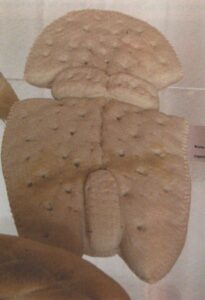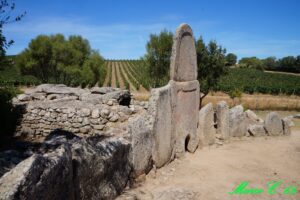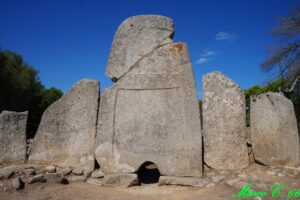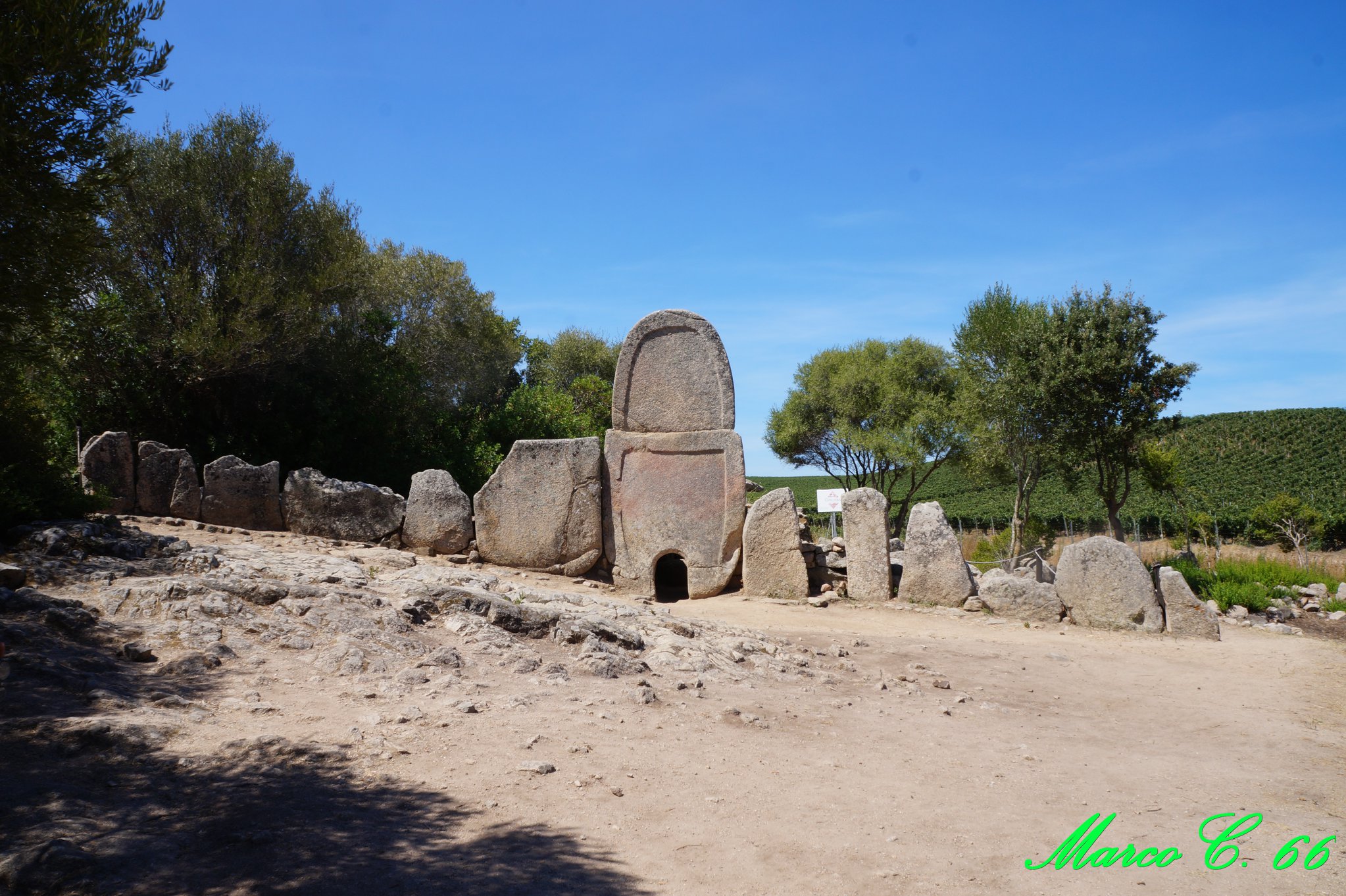The “tombs of giants” of Coddu Ecchju and Li Lolghi, in the territory of Arzachena, and the one called Pascaredda in Calangianus, are three of the characteristic collective burials of Gallura, erected during the Middle Bronze Age.
This popular name, therefore taken as a convention in archaeological terminology, is mainly due to the size of the tomb body and the burial chamber, capable of containing, as stated by the archaeologist Paolo Melis, dozens if not even hundreds of interred individuals.
 The Gallura tombs, in particular, are of the so-called “dolmenic” type, as they feature an elongated burial chamber made with vertically inserted stone slabs.
The Gallura tombs, in particular, are of the so-called “dolmenic” type, as they feature an elongated burial chamber made with vertically inserted stone slabs.
Previously, the tomb structure is articulated in two crescent-shaped arms – the so-called exedra – in a central arched stele, divided by an engraved strip in its middle part, and in a narrow entrance positioned low at ground level.
Of the three TdGs, that of Coddu Ecchju (located in front of the Capichera vineyards) shows the most intact stele, while only the lower part remains of that of Pascaredda. The TdG of Li Lolghi, in some ways the most majestic of the three, instead presents the upper register fractured obliquely.
The respective portals, due to their reduced dimensions, probably held a symbolic meaning, while the burials took place directly by accessing the burial chamber through the temporary removal of one or more stone slabs.
The floor plan of these monuments, comparable to a bull’s protome or, conversely, to the maternal womb, seems to refer to those concepts of sexual power and fertility that characterized the religiosity of the ancient Sardinians.
But the profile of the central stele could also be likened to a female genital organ, a source of life and of “longed-for return,” at the end of earthly existence.
The concept of fertility also finds an interesting confirmation in a traditional bread called Càbude.
What is proposed in the image taken from the book “I Pani della Sardegna” by the linguist Salvatore Dedola is the Càbude di Mores displayed in the museum of ritual bread in Borore.
The similarity, in particular, with the central stele of the dolmenic giant’s tombs is quite evident, but this is further complemented by the fact that, according to the interesting considerations of Professor Dedola, these breads, like other similar ones, were often “broken by the pater-familias on the head of the marrying daughter, the eldest son, or other family members or even on the heads of the employees…” The author of the aforementioned book also notes that “Su càbude was used not only to be crushed on the head but also to be hung in the sheepfold, as well as to be crumbled in the field or in the sheepfold itself, as a gesture of good auspice for future harvests and future offspring. This is an act that recalls the ancient sacrificial slaughter.”

 The photos of the giant tombs of Coddu Ecchju and Li Lolghi, in Arzachena, and of Pascaredda in Calangianus are by Marco Cocco.
The photos of the giant tombs of Coddu Ecchju and Li Lolghi, in Arzachena, and of Pascaredda in Calangianus are by Marco Cocco.
